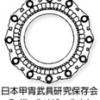-
Posts
508 -
Joined
-
Last visited
-
Days Won
2



Luc T replied to Keichodo's topic in Sword Shows, Events, Community News and Legislation Issues

Luc T replied to IanB's topic in Sword Shows, Events, Community News and Legislation Issues

Luc T replied to IanB's topic in Sword Shows, Events, Community News and Legislation Issues

